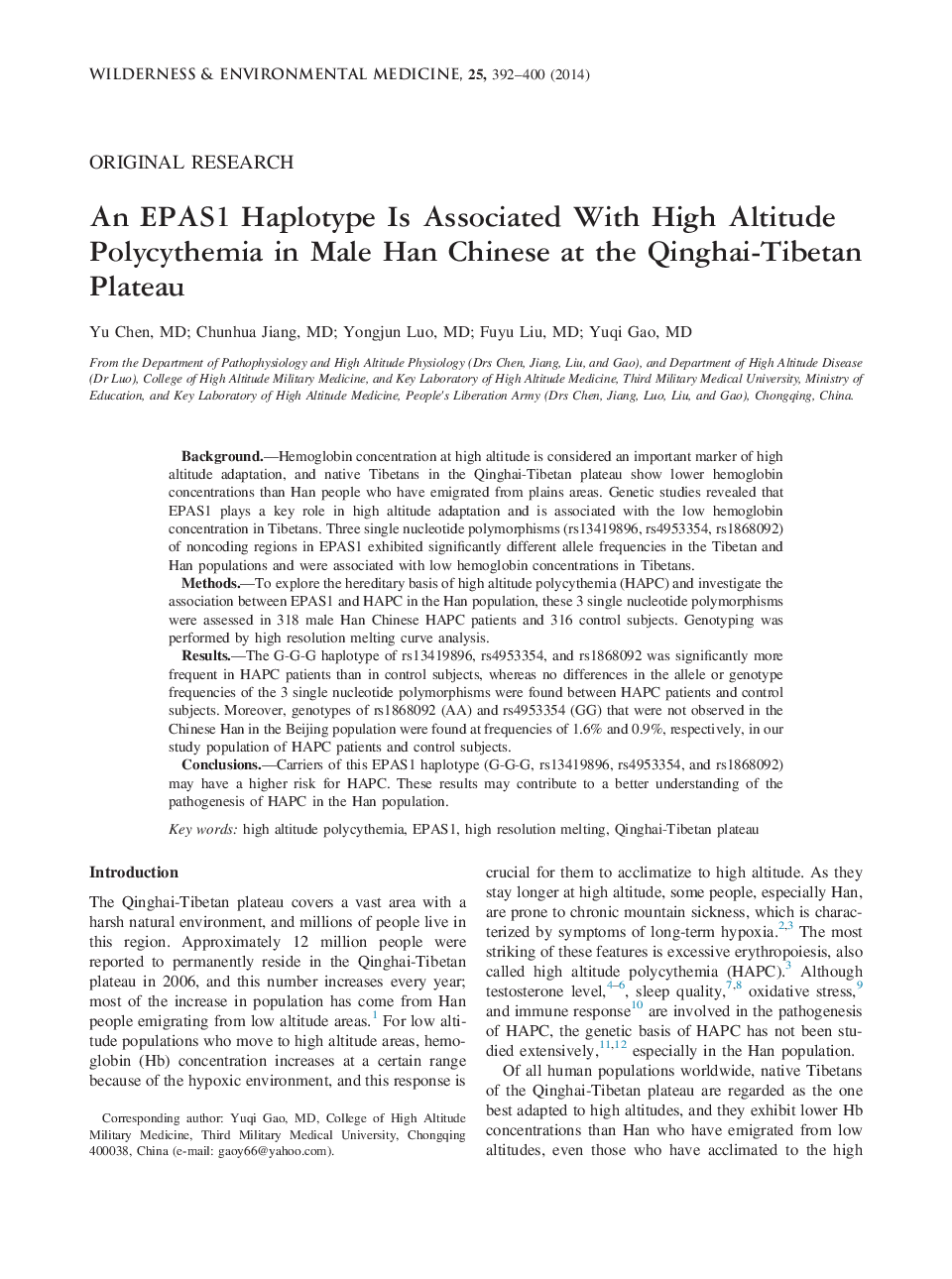| کد مقاله | کد نشریه | سال انتشار | مقاله انگلیسی | نسخه تمام متن |
|---|---|---|---|---|
| 2613487 | 1134885 | 2014 | 9 صفحه PDF | دانلود رایگان |
BackgroundHemoglobin concentration at high altitude is considered an important marker of high altitude adaptation, and native Tibetans in the Qinghai-Tibetan plateau show lower hemoglobin concentrations than Han people who have emigrated from plains areas. Genetic studies revealed that EPAS1 plays a key role in high altitude adaptation and is associated with the low hemoglobin concentration in Tibetans. Three single nucleotide polymorphisms (rs13419896, rs4953354, rs1868092) of noncoding regions in EPAS1 exhibited significantly different allele frequencies in the Tibetan and Han populations and were associated with low hemoglobin concentrations in Tibetans.MethodsTo explore the hereditary basis of high altitude polycythemia (HAPC) and investigate the association between EPAS1 and HAPC in the Han population, these 3 single nucleotide polymorphisms were assessed in 318 male Han Chinese HAPC patients and 316 control subjects. Genotyping was performed by high resolution melting curve analysis.ResultsThe G-G-G haplotype of rs13419896, rs4953354, and rs1868092 was significantly more frequent in HAPC patients than in control subjects, whereas no differences in the allele or genotype frequencies of the 3 single nucleotide polymorphisms were found between HAPC patients and control subjects. Moreover, genotypes of rs1868092 (AA) and rs4953354 (GG) that were not observed in the Chinese Han in the Beijing population were found at frequencies of 1.6% and 0.9%, respectively, in our study population of HAPC patients and control subjects.ConclusionsCarriers of this EPAS1 haplotype (G-G-G, rs13419896, rs4953354, and rs1868092) may have a higher risk for HAPC. These results may contribute to a better understanding of the pathogenesis of HAPC in the Han population.
Journal: Wilderness & Environmental Medicine - Volume 25, Issue 4, December 2014, Pages 392–400
